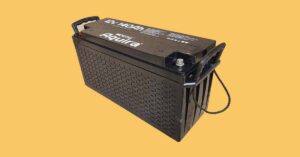Everything You Need to Know About Shooter Insurance

Active shooter/ work environment assault insurance programs differ widely in one policy to another. Each insurance company has a different notion of which dangers should be protected with what cost, obliging customers to consider each plan provision carefully to ensure they have all the coverage they want.
It’s not safe to believe your standard business responsibility coverage pertains to energetic shooter or office violence episodes. Many plans were written prior to the rate of mass shootings surged in this 10 years, and could exclude gun-related assault.
“Like the emergence and intensity of Cyber Responsibility episodes, the coverage lines presently offered in standard commercial plans really don’t contemplate these types of seemingly arbitrary and violent episodes, ” said Karl Seebacher, VP of McGowan Program Administrators’ Dynamic Shooter/Workplace Violence Department. “As these occasions unfold, we’re learning there are extreme dangers and costs to the firms and victims that occur soon after an assault, in addition to any legal fees and/or judgements/settlements ensuing years later on. ”
Shooter insurance buyers to consider the next items within an active shooter plan:
1 . Primary coverage
Major coverage means the plan kicks in immediately and doesn’t have to hold back for the exhaustion of other coverage. Major coverage is comparable to an EMT who rushes to the picture of an automobile crash and then remains with the harmed until they reach a healthcare facility.
A dynamic shooter occurrence is an emergency requiring an instantaneous response. It’s virtually no time for delays that may derive from concerns about insurance plan. Responding quickly and properly can save lives, reduce accidents, and possibly mitigate the severe nature of damage honours.
- Third-party liability
Active shooter situations often activate third-party responsibility issues, specially when they happen at work. A typical general liability plan might cover a company and its labor force but exclude than celebrations like guests, bystanders, or customers.
The random character of a dynamic shooting and its own potential victims requires coverage which includes third-party liability.
- Lawsuit coverage beyond protection costs
Some policies just pay the protection costs of the lawsuit – which can seem sensible when the probability of fatal or crippling accidents seems slight. However, gunshot wounds that wipe out or maim can produce six- or seven-figure harm honours, so it’s essential that coverage expands beyond simply protection costs to likewise incorporate problems and judgments.
- Coverage definitions
Be cautious of restrictive vocabulary about energetic shooting incidents. Plan vocabulary might include “deadly weapon safety, ” “ office assault, ” or “ dynamic assailant. ”
Quite simply, you want to ensure your “active shooter” coverage is not limited by merely gunfire. In the end, kitchen knives, homemade bombs, vehicle episodes, and a great many other weaponry can be just like lethal, and require as much coverage.
- Coverage triggers
An insurance plan may contain deductible-like casualty thresholds and could pay just if the attacker causes three or even more casualties, while also restricting coverage if the casualty count number exceeds 50. Normally, this leaves sizeable spaces in coverage if a couple of people perish and/or suffer crippling accidental injuries while also removing coverage if there’s a large-scale assault like this of the Mandalay Bay firing in NEVADA.
It takes merely one terrible event combined with carelessness for a single employee to make a crippling lawsuit. You’re greater off with wide coverage without limits on the amount of victims in a potential occurrence.
- No terrorism exclusion
Organizations that currently have a terrorism plan might think they already are insured for a dynamic shooter situation. However , to activate the coverage under the Terrorism Risk Insurance Action (TRIA) ( which gives reinsurance for terrorism insurance), the U. S. Federal government must certify it as an “ action of terrorism. ”
The strike must (1) be violent or dangerous to individual life, property, or facilities; (2) cause harm in america or even to U. S. property; (3) be an attempt to coerce U. S. civilians or the U. S. federal government; and (4) cause expected minimal loss of at least $50 million.
Untold damage can occur in occurrences with a variety of casualties. Thus, it’s imprudent to presume terrorism policies covers most energetic shooter/workplace violence occurrences.
- Crisis-response coverage
Organizations amid a dynamic shooter crisis need skilled crisis-response assistance. Energetic shooter coverage should take into account the expenses of risk management, funerals, press relationships, post-event hotlines, and guidance.
You will need a team of specialists who leap into action quickly and straight address the turmoil. You don’t want a faraway voice on the telephone looking to walk you through it with little if any real life experience.
- Property damage
Imagine what goes on if a dynamic shooter event activates your fire-suppression system: Water damage and mold could ruin computer systems, desks, carpeting, data files, plus much more. And there’s a threat of water leading to costly structural harm. So , don’t disregard property-damage coverage when looking for a dynamic shooter policy.
- Business income
The flip aspect of property-damage coverage is business-income security. Standard Business procedures that restore lost income may necessitate property damage to be able to trigger the business enterprise Income/Interruption. This works fine in the fire-suppression situation mentioned previously, but imagine if the energetic shooter/workplace violence occurrence doesn’t cause much property harm?
A mass filming in a restaurant or an office might lead to minor physical harm (broken cup, bullet openings in wall space, soiled carpet, etc . ) while inflicting considerable human stress that causes a closure for weeks, or even completely. (The taking pictures at the Cinemark theater in Aurora, Colorado can be an exemplory case of this. Structurally, the business enterprise could reopen immediately after the shooting, however the theater didn’t reopen for approximately half a year – meaning half of a 12 months of income and income were lost which business interruption insurance wouldn’t normally cover. )
Thus, linking lost business income to physical property harm can create a considerable vulnerability. Both do definitely not occur together.
- Medical/ loss of life benefits
The unique stress of the active-shooter event requires coverage that stretches beyond basic medical coverage. In addition, it should help individuals near to the victims, especially making it through beneficiaries.




